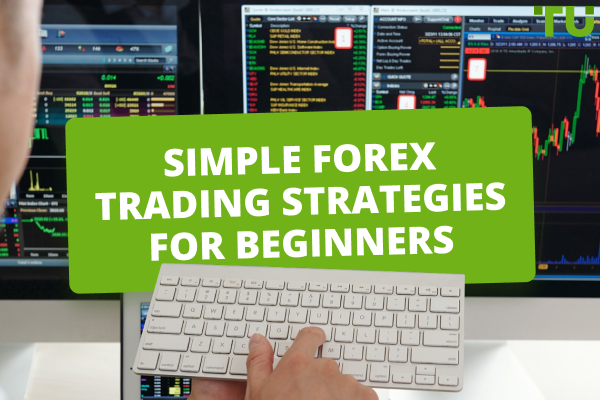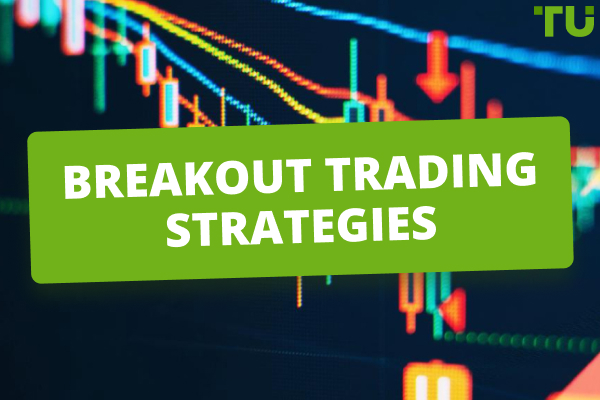Derivative Trading Guide for Beginners
Everybody knows that you can earn money on currency and cryptocurrency prices, invest money in securities, precious metals and resources. However, there is one more category – derivative financial instruments or derivatives. In this article, we will take a closer look at these instruments, the rules of how they are traded and how quickly it is possible to earn a profit on derivatives with minimum investment. This is more than real, as the modern derivatives markets are loyal to novice traders, and top brokers offer very good conditions for trading derivative financial instruments.
Start trading commodities right now with RoboForex!What are derivatives?
A derivative is not a currency, metal or commodity, nor is it a share. It is a contract; a contract that implies that the seller and the buyer undertake to perform certain actions in regards to an asset, which is considered the underlying asset of this specific contract. Usually, the actions mean purchase or sale.
An example of a derivative: a futures contract for currency, let’s say the US dollars. Under this contract, the seller undertakes to sell to the buyer a certain quantity of dollars (for example for Euro) at a fixed price after an agreed-upon period. It does not matter which way the market price of the US Dollar changes at the time of the contract execution, because the asset will be sold strictly at the agreed-upon price.
The derivatives are formal and standardized. Technically they are like securities; only the seller and the buyer are not obliged to own the underlying asset, and at least one of the parties has the right to sell the contract at any time.
Of course, the price of a derivative financial instrument always depends on the price of the underlying asset (for example, the price of a dollar futures contract depends on the market price of the US dollar). However, often these prices do not coincide, which allows traders to earn speculative profit.
To put it simply, derivatives allow traders to do two things at the exchange – to earn a profit on the change of the price of the underlying asset and hedge risks. We will discuss the earning opportunity below. Hedging the price or currency risk is opening positions in the same market to compensate for the risks in the other one. For example, a trader's key market is Forex, but in order to protect himself against the losses, he hedges the risk with a purchase – buys a futures contract on the traded currency, insuring himself against the supposed price growth.
Hedging is a separate topic; today we will discuss how to earn a direct profit on derivatives. This is possible because the volume of rights and obligations for the derivative financial instrument does not depend on the quantity of the underlying asset in the market. The issuer (owner) of the derivative often does not own the asset. Let’s say, there may be much more CFDs on the bonds of a certain company than the securities themselves, because it is not the securities that are traded by their price difference in specific periods of time.
Basic features of a derivative:
-
The price of the derivative instrument changes when the price of the underlying asset changes, but they are not always the same.
-
You need much less money to buy a derivative than to buy the underlying asset.
-
Calculations on the derivative are made in the future, not at the time of its purchase.
Notably, there are derivatives of derivative instruments, for example an option on the futures contract. Such derivatives have the same features and benefits of the original derivatives. The most important thing is that the derivatives market operates under the same laws of the commodities, securities and Forex markets. They have the same pricing rules and the same economic and political factors. Therefore, the price movement of derivatives can also be predicted.
Types of financial derivatives
Simply speaking, the derivatives can be divided into two groups: contract derivatives and freely traded derivatives. The prior are bilateral contracts traded over the counter and the latter are contracts that are traded at the exchanges, because they are standardized to fit them.
There is no common international law on derivatives; they are not even equated to securities in all countries. Therefore, when you trade these financial instruments, it is important to understand in which jurisdiction the broker that you are using to access the derivatives market operates. We will discuss the brokers later.
There are quite many derivative financial instruments: futures and forward contracts, options contracts and issuer options, swaps, warrants, depositary receipts. There are several types of nearly each of these derivatives, for example there are futures contracts on supplies and settlements, and there are interest, Forex, commodity and asset swaps. Let’s take a closer look at the main types of derivative financial instruments.
Futures contracts
The simplest definition of a futures contract is that it is an obligation to perform a transaction on agreed terms. For example, under a Forex contract, the seller supplies USD 100 to the buyer at the price as of the moment the contract was concluded (right now). It does not matter what happened to the price over the week – the contract will still be executed on the agreed terms.
In regards to the securities, metals, and commodity contracts, the buyer does not become the owner of the asset, upon the expiration of the contract he receives the cost of the underlying asset. For example, a trader concluded a futures contract with another trader for the purchase of 10 shares of Meta in 2 months. At the time the contract was signed, the price of 1 share was USD 280, and the price of the contract – USD 28. Therefore, the current expenses of the buyer were 28x10 = USD 280.
Two months later, the price of 1 share of Meta grew to USD 340, but the transaction will still be executed at the initial contract price – USD 280 per 1 share. Therefore, the profit of the buyer will be: (340-280)х10-28х10= USD 320. His net profit will be this amount minus the broker’s fee. Meanwhile, the seller will close the trade at a loss: (340-280)х10 = USD 600. This is how all derivative financial instruments work – when one person makes a profit, the other one suffers a loss.
Forward contracts
The difference between forward contracts from futures contracts is primarily that they are traded over the counter. Therefore, they are not standardized and do not follow the rules of the exchanges. Forward contracts are often used by banks and other large financial organizations. The idea is that a forward contract allows you to level the expenses of exchanging one currency for the other.
For example, an importer (company A) takes out a loan in euros, but will have to repay it in US dollars at the current exchange rate. If euro price grows against the US dollar, the expenses of company A will increase. In order to avoid that, the company signs a forward contract with the exporter (company B), which benefits from the price growth of the foreign currency. Under the contract, company A purchases euros in the future at a specific fixed price, which is beneficial to both parties. This way, the contracting parties insure themselves against changes in the exchange rate.
Individuals can also conclude forward contracts, both financial (to buy currency) and commodity (to buy commodities). Example: a trader concludes a contract in the precious metals market for 3 months at the current price of platinum at $31 per 1 gram, undertaking to buy platinum at $35 per 1 gram after a specified period. Three months later, the platinum price increases to $40 per 1 gram, but the trader still buys it at $35. And then sells it immediately at $40. Therefore, a trader makes $5 per gram.
Options
An option as a derivative financial instrument is conceptually different from futures and forward contracts, as it gives not the obligation, but the right to conclude a transaction. If the buyer does not guess the trend right, he can refuse the transaction, while the seller will receive a compensation from the premium amount, which the buyer pays when he buys the option. At that, the seller is obliged to perform a transaction; he does not have the right to refuse. There are two types of such derivatives – put and call.
Put options allow the seller to sell the asset. For example, a share of a certain company costs USD 300. The buyer, who holds these shares, concludes an agreement with the seller, stating that in 6 months he will buy these shares at the stated price. The buyer transfers to the seller a premium of USD 50. After six months the shares price dropped to USD 230 – the buyer wins, because he paid only USD 50, but can now sell his shares at the price that is higher than the market price (USD 300).
If six months later, the shares price grew – the seller wins, because he buys the shares at a price that is lower than the market price and gets to keep the USD 50 premium.
Call options work the other way around – they give the right to buy the underlying asset. The buyer of an option still pays the USD 50 premium to the seller and has the right to buy the shares at USD 300 in six months (the stated price of the option). If the price grows within this timeframe (for example to USD 400), the buyer of the option uses his right and buys the shares at USD 300. If the price of the securities dropped, the buyer refuses the transaction and the seller keeps the premium.
Swaps
Swap is a type of derivative that involves bilateral exchange of payments that is beneficial to both parties. There are interest and currency swaps. It is easier to review the currency swap. Let’s say that a large investor wants to buy bonds for USD 1 million. Under the conditions of the deal, in 1 year he will receive a profit of 5% of the amount, which is USD 50,000. It seems smooth, but the investor holds his funds in euros. They can be simply converted into US dollars, but this is often not expedient.
For example, an investor bought US dollars from a bank at the rate of 1.050. Therefore, for USD 1 million he paid EUR 952,000. And then, after 12 months, when he locked his profit – USD 50,000, he discovered that the US dollar dropped to 1.117. As a result, during the conversion into euros, he even suffered a loss (he received EUR 895,000). A swap is a good alternative.
Under the conditions of a swap, the bank offers the investor to buy USD 1 million at the rate of 1.050, which is EUR 952,000, and sell the same million in a year at 1.055, which is EUR 947,000. Plus USD 50,000 of profit, which the investor converts at the market rate in a year. In this case, the possible losses are minimized.
The most important thing is that with a swap, the investor rules out any risks. Of course, if the rate changes considerably in his favor, he could earn more without the swap, but there are no guarantees of that. This kind of risk is considered unreasonable.
Risks and opportunities for investors
Profitability of derivative trading is determined by several factors. The first one is the stated price. The second is the guarantee obligations, i.e. the premium, that protect the seller of the derivative in case the buyer refuses to buy. The third factor is that the derivative financial instruments are standardized and depend on the underlying asset; therefore they are predictable in the sense that the buyer of the derivative can successfully predict the movement of the asset’s price in the needed direction.
Finally, there is leverage. Derivative trading through a broker implies the use of leverage, when a trader can enter into a trade for an amount that exceeds his investment. For example, leverage 1:5 indicates that a trader can conclude a futures contract for USD 100, while having only USD 20. Thanks to this, derivative trading has the huge profitability potential. Unfortunately, the risk indicator is high as well.
Risks of trading derivatives:
-
Market risk. When the price of the underlying asset changes, one of the parties to the trade (seller or buy) always suffers a loss.
-
Credit risk. If the trade involves the use of leverage and the buyer refuses to buy, the seller will suffer a loss.
-
Liquidity risk. If the demand for the underlying asset drops, so does the liquidity of its derivative financial instruments.
-
Operational risk. Time difference (settlement time), delays and failures of technical systems, human factors – all of these can reduce the profitability of the trade and even lead to losses for any of the parties.
There are many risks and each can become critical for a trader. The market risk is the biggest one, when the forecast is wrong. In this case, a trader is guaranteed to suffer a loss and a big one, especially on leveraged trades. The same risk, however, determines the profitability of trading derivatives. As we’ve already mentioned, when one party to the trade loses money, the other one always earns a profit.
How can I make money on derivatives?
Usually, these are options and futures, as they are the simplest and clearest derivative financial instruments. The profit is determined by the strategy. For example, you can speculate with an instrument by reselling a currency futures or option. Also, you can try to earn a profit from the asset price, for example buy a securities option at the price lower than the market, wait for the option execution and sell the asset at a higher price.
Let’s review an example of an option. 1 share of Netflix costs USD 250. A trader performs a fundamental market analysis and predicts that the price of the share will very soon increase to USD 375. He buys a call option and pays the premium of USD 25 (10%). When the option is executed and if the price of one Netflix share does increase to USD 375, he will be able to buy it at USD 250. 375-250-25= USD 100. This is the profit of a trader per each share in the option.
If a trader initially had USD 250, he could buy 10 shares; therefore his potential profit could be USD 1,000. Now, assuming that the trader used a leverage of 1:10, his profit could be as high as USD 10,000.
Trading at derivatives exchanges
Derivatives exchanges are platforms, where derivative financial instruments are traded. In reality, there are practically no exchanges that offer only derivatives, because the absolute majority of traders view trading derivatives as one of the instruments, not the only instrument. Also, as we’ve already mentioned, many use derivatives to hedge risks.
For example, there is the New York Mercantile Exchange, the Malaysian Exchange, the London Metal Exchange, and the St. Petersburg International Mercantile Exchange. All these platforms trade commodities and their derivative financial instruments – futures and options. There are exchanges where you can trade cryptocurrencies and various contracts for them. Examples of such exchanges are Binance, OKX, Bybit, BTCEX, Bitget.
The advantage of working with the exchanges is that they are licensed, offer a choice of many derivative financial instruments and they charge low fees and require a low minimum deposit. For example, taker’s and maker’s fee on Binance is 0.02% and 0.04% respectively. The exchange does not have a minimum deposit requirement, which means that a trader can deposit funds in any cryptocurrency and the majority of currencies without restrictions.
CFD contracts
CFDs are contracts for differences. Technically, they are also derivative financial instruments. Under this contract, the seller undertakes to pay the buyer the difference in the settlement price of the underlying asset between the open and closing trades. There are currency, precious metals, stock CFDs, and the seller does not own the underlying asset and the buyer does not buy it. All transactions are performed solely with the asset price differences.
Many people believe that CFDs are simpler than any other type of a derivative and partially this is true. For traders, such contracts are simple, because they don’t have to consider anything else but the forecast – will the price go up or down? The underlying asset is not important, just the price. For example, a contract for differences is concluded for the Microsoft shares. Today’s price of one share is USD 264. A trader expects that the price will increase to USD 285 per share in a week’s time. Therefore, he buys a CFD for a week.
Upon expiration of this period, if the price did increase as the trader had predicted, he gets 285-264 = USD 21 per each share included in the option, minus the broker’s fee. However, if the price dropped, the trader suffers a loss (he pays the difference to the seller). The contract can also be concluded based on the prediction that the price will drop. Then, the trader will suffer a loss if the price goes up against his forecast.
The absolute majority of brokers offer CFDs. The requirements for them are minimal – simple conditions for account opening (registration with verification) and a small deposit (usually USD 10-100 or even zero). As for the risks, they are typical for trading derivatives. The most important thing is to guess the trend of the underlying asset right.
How to start trading derivatives – a step-by-step guide
Step 1. After reading this article, decide on the derivative financial instrument you would like to trade.
Step 2. Choose a broker that offers the best conditions for trading the chosen derivative (we will list the top brokers below).
Step 3. Register with the broker and pass verification. It is better to register via Traders Union in order to receive rebates.
Step 4. Make a deposit using the most convenient way for your (debit/credit card, wire transfer, electronic payment system). Start with a small amount of up to USD 100 (many brokers offer welcome bonuses).
Step 5. Select a specific instrument (for example a futures contract on dollar or an option for the shares of any company).
Step 6. Perform technical and fundamental analysis of the underlying asset of the chosen instrument and predict the change of its price.
Step 7. Buy the chosen derivative on the conditions that you’ve predicted and wait for its execution.
Step 8. If your forecast was correct, you will earn a profit; if not – you will suffer a loss.
Step 9. Use a demo account to test your strategy.
Step 10. Diversify your investment portfolio by buying different derivatives (and not only derivatives).
Step 11. Study educational materials and manuals on derivatives available on the broker’s website.
Step 12. Never stop, improve your theoretical knowledge and practical skills. Read books on derivatives and trade.
Best brokers to trade derivatives
It is safer, easier and more convenient to trade financial derivatives through licensed brokers that provide access to international markets and operate under the aegis of regulators. However, not all brokers offer equally beneficial conditions. Below, we will briefly review two platforms that TU’s users and experts ranked as the best.
InteractiveBrokers – the best choice for trading at the derivatives exchanges
The broker provides access to the largest derivatives markets – the CBOE Futures Exchange, the Chicago Mercantile Exchange, CBOT, ENDEX, CME, ICE (U.S. futures and cryptocurrencies), the New York Stock and Mercantile Exchange, the Small Exchange SMFE. The minimum maintenance margin for futures is $50 per contract, for short options – $25/$50. The fees depend on the trading volume, for example, for options, beginners are charged with a fee of $0.25 per contract (IBKR Pro, $1 minimum order), while for standard futures, the exchange charges $0.85 per contract. The platform has its own educational program, free analytics, and additional services.
FAQs
What are derivatives?
Derivatives are derivative financial instruments, contracts that give the parties (seller and buyer) rights and / or obligations regarding the underlying asset.
What kinds of derivatives are there?
The most popular derivatives include futures and forward contracts, swaps and options. CFD contracts is another popular type of a derivative financial instrument.
Where can I trade derivatives?
There are derivatives exchanges, but it is more convenient and beneficial for an individual to trade through a broker. There are brokers that offer good conditions for accessing the exchanges and CFD contracts with low fees.
Can I earn a profit on derivative trading?
Traders often use derivative financial instruments for hedging risks. However, these instruments can also be used for speculative trading, and they are potentially profitable.
Team that worked on the article
Andrey Mastykin is an experienced author, editor, and content strategist who has been with Traders Union since 2020. As an editor, he is meticulous about fact-checking and ensuring the accuracy of all information published on the Traders Union platform. Andrey focuses on educating readers about the potential rewards and risks involved in trading financial markets.
He firmly believes that passive investing is a more suitable strategy for most individuals. Andrey's conservative approach and focus on risk management resonate with many readers, making him a trusted source of financial information.
Olga Shendetskaya has been a part of the Traders Union team as an author, editor and proofreader since 2017. Since 2020, Shendetskaya has been the assistant chief editor of the website of Traders Union, an international association of traders. She has over 10 years of experience of working with economic and financial texts. In the period of 2017-2020, Olga has worked as a journalist and editor of laftNews news agency, economic and financial news sections. At the moment, Olga is a part of the team of top industry experts involved in creation of educational articles in finance and investment, overseeing their writing and publication on the Traders Union website.
Olga has extensive experience in writing and editing articles about the specifics of working in the Forex market, cryptocurrency market, stock exchanges and also in the segment of financial investment in general. This level of expertise allows Olga to create unique and comprehensive articles, describing complex investment mechanisms in a simple and accessible way for traders of any level.
Olga’s motto: Do well and you’ll be well!









